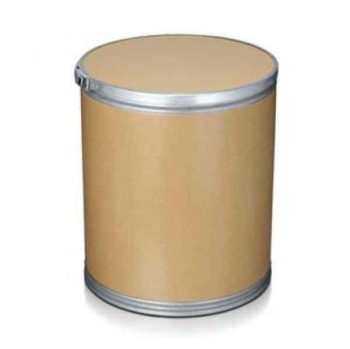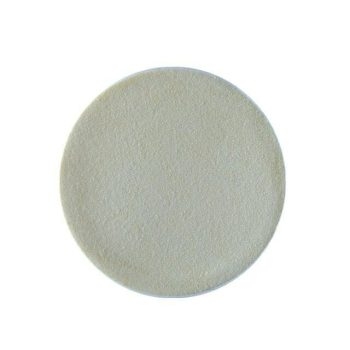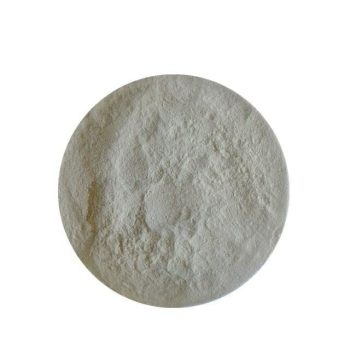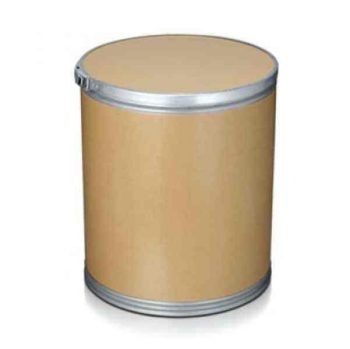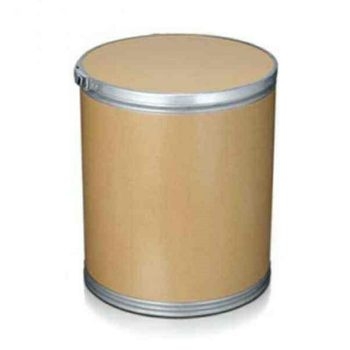Baking Enzymes are indispensable in bread baking. They convert the flour starch into sugars that can be used by the yeasts and break down gluten proteins and mucilage. The salt-yeast process makes use of the effect of yeast’s own enzymes.
Baking Enzymes are (with a few exceptions) proteins which, as biocatalysts, can initiate biochemical reactions and/or influence their course. The enzymes remain unchanged, i.e. they only serve as tools and are not consumed themselves.
The enzymes form enzyme-substrate complexes with their substrate, at which the substrate is converted or split. After the reaction product has been separated from the enzyme, it is ready for further reactions. Enzymes act in a substrate-specific and effect-specific manner, i.e. they only convert a specific starting material or only catalyze a specific type of reaction.
With our baking enzymes, the softness of the bread is maintained and the shelf life is extended. The increase in softness results in relatively few returns of stale bread, which helps to control inventory and logistics of delivery, thus reducing bread waste. Using our enzymes to impart a fluffier, more flavorful texture to muffins, pound cakes, heavy cream cakes, sponge cakes, and more. It also stays fresh and soft for a long time.
Baking Enzymes Products
Where to buy the baking enzymes? Baking enzymes are not baking soda or baking powder. As one of the largest enzyme companies, we have a variety of enzyme products at competitive prices, such as fungal alpha Amylase, Glucose Oxidase, Xylanase, Maltogenic Amylase, Lipase, Catalase, and etc.
-
Enzymes for Bread Baking
Fosfolipasenzymer som förbättringsmedel vid brödtillverkning
$178.50 Add to cart -
Enzymes for Bread Baking
Enzymbrytare med hemicellulas för att förbättra degens egenskaper och brödkvaliteten
$69.00 Add to cart -
Enzymes for Bread Baking
Glukosoxidasenzymer för bageri – enzymer för bakning av deg
$165.00 Add to cart
- Baking is a common name for the production of bakery products such as bread, cakes, cookies, crackers, biscuits, cookies, tortillas, etc.
- Enzymes are becoming very important for the baking industry.
- In baking, enzymes are used to produce products of consistent quality by enabling better dough handling, providing fat-repellent properties, and controlling crumb texture, color, taste, moisture, and volume.
- Depending on the raw materials used in baked goods, amylases, hemicellulases, lipases, oxidases, cross-linking enzymes and proteases can be used in baked goods.
Application of Enzymes in the Bakery Industry
- Baking enzymes are used as flour additives and in dough conditioners to replace chemical ingredients.
- Use of different types of enzymes :
· Amylases: convert starch into sugar and produce dextrins.
· Oxidases: strengthen and bleach the dough
· Hemicellulases: to improve the gluten strength
· Proteases: reduce the elasticity of the gluten. - All these enzymes together play an important role in maintaining the volume, softness of the crumb, crispness of the crust, coloring or browning of the crust and maintaining freshness.
Application of Baking Enzymes in Making the Bread
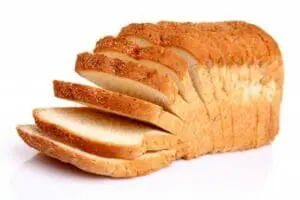
- Bread is the product of baking a mixture of flour, water, salt, yeast, and other ingredients.
- The process of making bread includes:
· To make a dough that rises easily.
· To make good bread, the dough must be stretchy enough to expand during fermentation.
· The bread dough must be elastic. - For decades, alpha-amylases have been used to make bread.
- Due to rapid developments in biotechnology, new enzymes have recently been made available to the bakery industry.
· Xylanase: improves the machinability of dough.
· Lipase: gluten strengthening effect, which results in a more stable dough and a better crumb structure, similar to DATEM or SSL/CSL.
Application of Baking Enzymes in Cake and Muffin Production

- Cakes are made by mixing the ingredients into a liquid dough and including air to form a mousse.
- The air expands during baking and the mousse turns into a sponge.
- Emulsifiers are added to facilitate air absorption and improve the dispersion of fats in the dough and to stabilize expanding gas bubbles in the dough during baking.
- These emulsifiers can be replaced by a commercial lipase in cake production.
- After baking, this leads to an increase in the specific volume of the cake and the preservation of a fine crumb structure.
- Food quality and perceived freshness are also improved.
- If the quantity of eggs is reduced, the quality of the cake will deteriorate.
- This can be remedied by adding phospholipase.
- Phospholipases increase the volume of the cake and improve its properties during storage, such as increased cohesion, flexibility, and elasticity.
- Starch-degrading enzymes prevent the staling of the cake.
- Amylase can be used in a cake powder conditioner, which can improve the softness of the crumb and the shelf life of the product.
Application of Enzymes in Biscuit, Cookie and Cracker Production

- The production of biscuits generally involves several phases such as mixing, resting, processing, and finally baking.
- Sodium metabisulphite (SMS) is currently used in the baking industry to soften the cookie dough.
- It is used in the industry to reduce shrinkage of dough pieces and irregular size of baked goods.
- Protease can be used in crackers to increase the extensibility of the dough.
· Proteases hydrolyze the internal peptide bonds of gluten proteins, while SMS increases elasticity by breaking the disulfide bonds.
· The texture of the resulting biscuits will also be more open and tender.
- The use of papain with an oxidizing enzyme (such as glucose oxidase) may facilitate the production of biscuits.
- Manufacturer for mimicking the effect of sulphite in the pulp.
- The combination of papain and glucose oxidase results in a rapid decrease in dough consistency to the desired level.
- Hemicellulose and cellulose-degrading enzymes make the dough softer and require less water,
less energy input, which ultimately leads to increased emissions from the plant. - The use of hemicellulases in the cracker pulp may result in partial degradation of the hemicellulose which reduces the binding capacity of the water.
· More water is available and a softer paste is obtained.
· Shortens cooking time and improves quality by cooking more evenly, resulting in fewer controls.
- Alpha-amylases play a subordinate role in the production of biscuits.
- They are able to produce dextrins from damaged starch and play a role in enzymatic browning during baking, resulting in darker biscuits.
- The addition of an a-amylase (fungus) potentially inhibits control and produces a loosening effect and improved flavor development.
- . Improve water distribution in the dough, resulting in greater uniformity and therefore fewer control problems after baking.
- The use of a pentosanase reduces cracking in crackers by lowering the water content and is particularly useful in low-fat and/or high-fibre formulations.
- Low-fat and/or high-fibre pulps require a higher water addition to achieve good machinability.
- This water must also be removed during cooking, which increases cooking time.
- The addition of hemicellulases results in a lower water binding capacity, so there is more water available for easier processing.
Use of Baking Enzymes in Tortilla

- Flour tortillas are made from wheat flour, water, baking fat and salt, preservatives, leavening agents, reducing agents, and emulsifiers.
- The flight of tortillas incorporates the starch in the amorphous phase and does not significantly disturb the crystallization of amylopectin.
- Alpha-amylase can partially hydrolyze amylose, with the starch forming a bridge to the crystalline region and protruding amylopectin branches.
- Starch hydrolysis reduces the rigid structure and plasticity of starch polymers during storage.
- The flexibility of the tortillas results from the combined functionality of amylose gel and amylopectin, which solidifies the starch grain during storage.
More about Baking Enzymes
Enzymes are widely used in the baking sector. The first basic ingredient of cake is flour. On average, flour contains 82% starch, 12% protein and 3% fibre. Flour also contains natural enzymes in the presence of water. These are involved in the process by which the dough gets its proper consistency. These enzymes include amylases, which produce a substrate for the yeast enzymes that carry out alcoholic fermentation, proteases, which increase the volume of the dough, and xylanases, which increase the elasticity of the dough.
A major part of designing an enzyme system for a customer is to determine where this material is best needed. I think it is safe to say that in most cases it works during the preparation of the dough and perhaps also during the fermentation of the dough. That is when you will chop the small pieces of starch. But it actually only works if you take it out of the oven.
And over time, the larger starch molecules might crystallize or want to be reversed. But the small pieces of starch that you have created in the mixing process are still there and ready to prevent this crystallization. That is correct. The active effect of the enzyme occurs during the production of the dough. But the functionality occurs after baking.
That was one of the challenges in the premature release of the enzymes, because people don’t know that something has happened in a ball and a fermentation process and whether it is deactivated. They do not want to activate the enzymes in the product after cooking.
Decades ago, people did not really know how and when to use them. Bakers have had many bad experiences by using either the wrong type of enzyme or too much of it. An extreme example is when you had to put too much amylase in your dough. This amylase would start to break down the starch in all directions. And you could end up with an almost liquid dough. So this is an extreme example of the excessive use of an enzyme. Most amylases available today are designed to be deactivated during baking.
Which enzyme can a baker use to increase the volume?
There are many interactions between the different aspects of baking. This also applies to the way enzymes interact with baked goods. If I give you an example, there are several ways to influence volume. One of the enzymes we work with is a class of enzymes called proteases.
And instead of breaking down carbohydrates or starch, as we talked about amylase, the beet enzymes break down the protein, they break down the gluten. So they can weaken the gluten network. So if you have just the right amount of enzymes, you might be able to reduce the tension in the dough and make it rise a little more. So this is one possible approach.
Another approach would be to use an enzyme that produces carbohydrate fragments, so that the yeast can make use of its food and make the yeast more productive by producing more gas. And then you have more pressure to increase the volume. So I think what I am trying to say is that there are a lot of multiple interactions and we try to keep that in mind when we design an enzyme system.
Rarely do we design an enzyme system with one type of enzyme or one enzyme that is measured by trying to affect several functions simultaneously. And it depends very much on the specific application. It depends on the process used by the customer.
Do you have something for my low sugar dough?
Because, you know, you cannot add more yeast, and adding more years is not the solution. So the solution that Aaron Clinton proposed was to add an enzyme to the clote, cut up the carbohydrates and give these foods more nutrition. We may have to turn more knobs than just providing carbohydrate fragments or yeast. We may also have to play with other features to make it a complete success. But yes, the logic you have set out is absolutely correct. It is the kind of thing where you can use an enzyme to solve a problem that you have here
Do you have a lot of requests for the baking enzymes?
Yes, it is very common for industrial bakers to face difficulties due to fluctuations in their flour supply. And they may have a recipe and a process that is set up in such a way that, for example, we develop a sub-rule that perfectly fills the dependencies of each one, perfectly shaped, in the whole tray. And then a new batch of flour arrives and suddenly the moulds are no longer full and the dough is too firm.
We are able to provide suppliers with formulated tools that allow them to modulate this extensibility to compensate for variations in their incoming flour. Sometimes we do this for a customer, and it only needs to be done once, and he is satisfied with the performance of his dough. In other cases, we have to show a baker how to use this particular tool and he adjusts the amount used when the type of flour changes.
We have ready-to-use products that customers can try to see if this solves their problem. But we are also happy to formulate a specific solution for them to do that. This specific solution means that you don’t use the baking enzymes in every production. It would be in production. The dough seems to be more Buckie.

